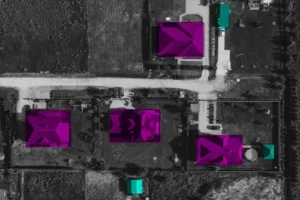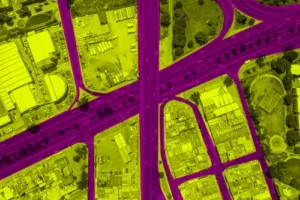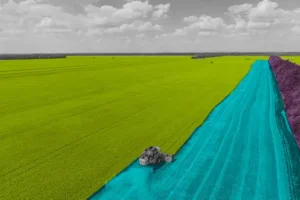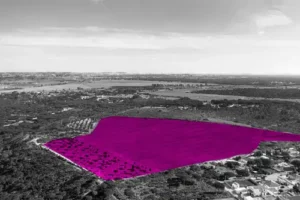Unveiling the Power of Geospatial Annotation: Unleash the Secrets Hidden in Your Location Data
In a world overflowing with data, location intelligence has become the crown jewel.
Businesses of all stripes are increasingly turning to the power of geospatial data to gain a deeper understanding of their target audience, streamline operations, and make data-driven decisions that propel them forward.
However, raw geospatial data, often presented as satellite imagery, aerial photographs, or LiDAR scans, requires human expertise to unlock its true potential. This is where the magic of geospatial annotation steps in.
Delving into Geospatial Annotation: The Art of Data Enrichment

Geospatial annotation is the meticulous process of enriching geospatial data by meticulously adding labels and detailed descriptions to specific features within the data. These features can encompass anything from the intricate details of buildings and road networks to the vast expanse of different vegetation types and land-use patterns. Through manual annotation, human annotators essentially become data whisperers, training AI and machine learning models to “see” and interpret the real world reflected in the geospatial imagery.
Why Geospatial Annotation is the Unsung Hero of Data Analysis

The importance of geospatial annotation in unlocking the value of geospatial data cannot be overstated. Here’s a deeper dive into the compelling reasons why it’s crucial:
- Sharpened Accuracy: Precise annotation empowers AI models to identify and classify objects within geospatial data with unparalleled accuracy. This enhanced precision is the backbone for groundbreaking applications like autonomous vehicles, environmental monitoring initiatives, and meticulous urban planning efforts.
- Context is King: Annotations breathe life into the data by providing crucial context. AI models, armed with this enriched understanding, can decipher the relationships between various features. This newfound knowledge is vital for tasks like in-depth land cover analysis, efficient infrastructure management, and resourceful resource exploration.
- Customization is Key: The beauty of geospatial annotation lies in its adaptability. Businesses can tailor their annotation projects to their specific needs. Depending on their unique goals, they can choose to annotate data for object detection, scene classification, or change detection, making the data truly work for them.
The Vast Landscape of Geospatial Annotation Applications

Geospatial annotation transcends industry boundaries, finding application in a multitude of fields:
- Autonomous Vehicles: Highly accurate annotations are the invisible teachers that train self-driving cars to recognize pedestrians, navigate traffic signs, and stay within designated lanes.
- Agriculture: With the power of annotation, farmers can classify crop types with ease, monitor crop health with precision, and assess yield potential to optimize their harvests.
- Environmental Monitoring: Annotations become the watchful eyes that enable us to track deforestation, analyze land degradation, and monitor natural disasters, allowing for proactive environmental protection.
- Urban Planning: Annotations act as a detailed map, aiding in the meticulous planning of infrastructure, assessment of building types, and analysis of urban sprawl, fostering the creation of sustainable and efficient cities.
Subul Data Annotation: Your Trusted Partner in Geospatial Annotation Expertise

At Subul Data Annotation, we recognize the critical role geospatial annotation plays in unlocking the power of location-based data. We boast a team of highly skilled and experienced human annotators who are adept at handling even the most complex geospatial annotation projects with unparalleled accuracy and efficiency. We leverage cutting-edge annotation tools and employ rigorous quality control processes to ensure the highest possible data quality, providing you with data that is as reliable as it is insightful.
Ready to Unleash the Secrets Hidden in Your Geospatial Data?

If you’re eager to extract valuable insights from your geospatial data and propel your business forward, Subul Data Annotation is the perfect partner for you. We are here to help you unlock the hidden potential within your location data. Contact us today to discuss your specific needs and learn how our comprehensive geospatial annotation services can empower you to achieve your goals.
Frequently Asked Questions About Geospatial Annotation
1. What type of geospatial data can be annotated?
- Satellite imagery
- Aerial photographs
- LiDAR scans
- Drone footage
- Street-level imagery (collected by cars with mounted cameras)
2. What are the different types of geospatial annotations?
- Bounding boxes: Used to identify and locate objects within the data (e.g., buildings, vehicles, trees).
- Polygons: Employed to define the specific area of interest, such as a specific land cover type (e.g., forest, farmland) or a designated construction zone.
- Points of interest (POIs): Annotate specific locations with descriptive labels (e.g., fire hydrants, traffic lights, bus stops).
- Centerlines: Used to mark linear features like roads, rivers, or power lines.
- Semantic segmentation: Pixels within the image are classified to belong to specific categories (e.g., road, sidewalk, building).
3. How long does the geospatial annotation process take?
- The complexity of the data: Highly detailed imagery with intricate features will take longer to annotate than simpler data sets.
- The type of annotations needed: Bounding boxes can be completed relatively quickly, while semantic segmentation tasks are more time-consuming.
- The volume of data: Larger datasets will naturally require more time to annotate.
4. Can geospatial annotation be automated?
5. What are the benefits of using Subul Data Annotation for your geospatial annotation needs?
- Highly skilled and experienced human annotators: Our team ensures data is annotated with the utmost accuracy and attention to detail.
- Rigorous quality control processes: We employ multi-layered quality checks to guarantee the highest data quality.
- Scalability to meet your needs: We can handle projects of all sizes and complexities.
- Expertise in various geospatial annotation types: We can tailor our services to your specific requirements.
- Commitment to client satisfaction: We prioritize clear communication and a collaborative approach throughout the project.